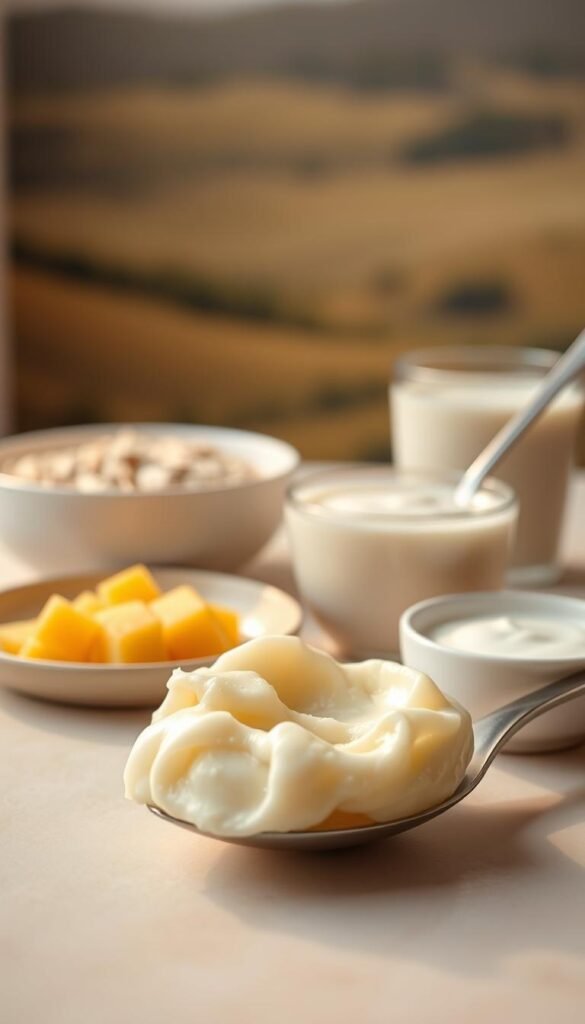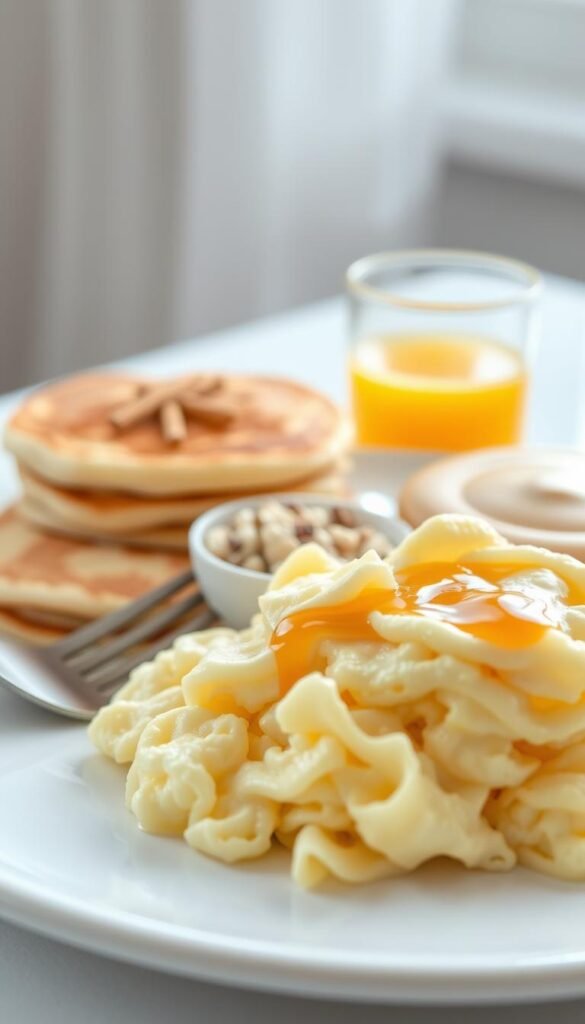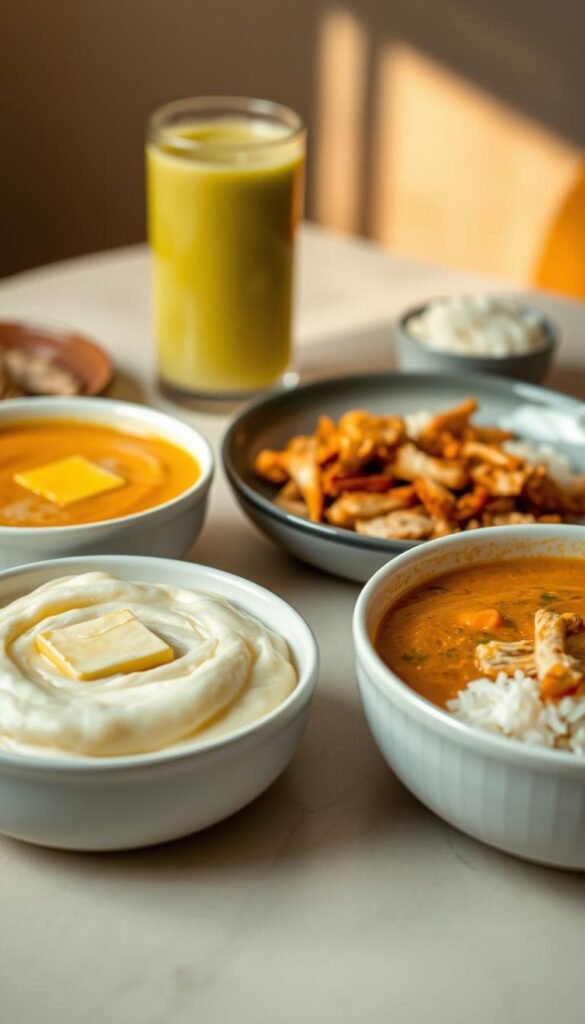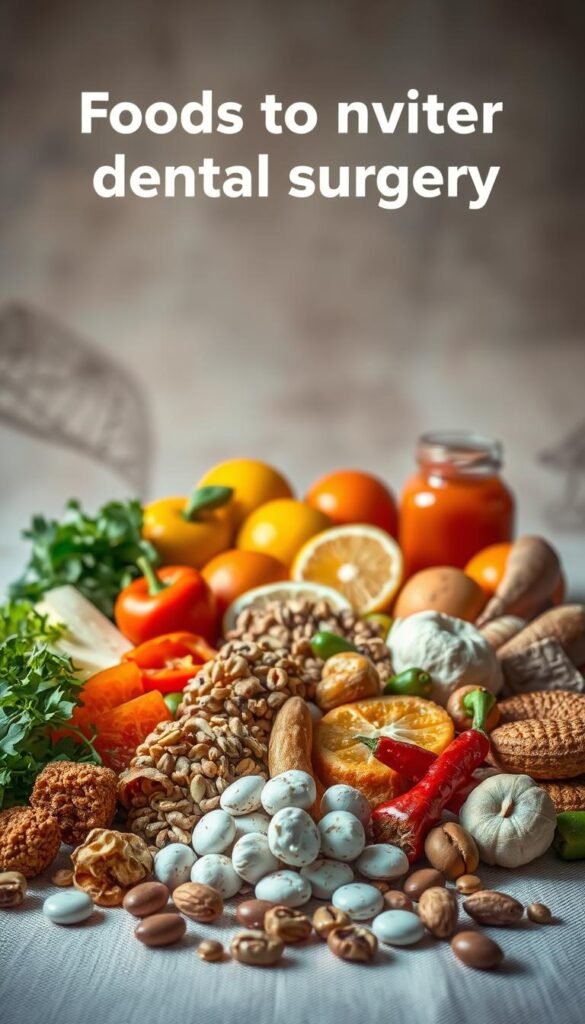After undergoing oral surgery, your mouth and jaw can be sore, making eating a challenge. Consuming the right foods is crucial for a smooth recovery and to avoid irritating the surgical site. A diet rich in nutritious foods can help promote healing and reduce discomfort.
Recovering from dental surgery requires careful attention to your diet. The right soft foods can make a significant difference in your recovery experience, providing necessary nutrition without irritating the treated area. This guide will walk you through the best food options that are gentle on your mouth and support overall health, including gut health and inflammation reduction.
Key Takeaways
- Eating soft foods after oral surgery helps reduce irritation and promotes healing.
- A soft food diet is crucial for minimizing discomfort during recovery.
- Nourishing foods support overall health and gut health.
- Gradually transitioning back to a normal diet is essential.
- Certain foods can help reduce inflammation and support digestion.
Understanding the Need for Soft Foods After Oral Surgery

Adjusting your eating habits after oral surgery is vital for minimizing discomfort and promoting healing. Oral surgery procedures, such as dental implant placement, tooth extraction, and wisdom teeth removal, can leave your mouth and jaw feeling sore. Consuming soft foods after dental surgery helps reduce irritation on the wound site and prevents biting on the treated area, which can disrupt the healing process.
Types of Oral Surgeries That Require Dietary Modifications
Various oral surgeries necessitate different levels of dietary adjustments. Procedures like wisdom teeth removal, dental implant placement, and bone grafts require special dietary considerations during the recovery period. Each surgery affects different areas of your mouth, but all benefit from a gentle approach to eating that minimizes pressure and irritation. The types of oral surgeries that often require dietary modifications include:
- Dental implant placement
- Tooth extraction
- Wisdom teeth removal
- Bone graft or gum graft surgery
- Root canal procedures
How Soft Foods Support the Healing Process
Soft foods play a crucial role in the healing process by preventing disruption to the blood clots that form at surgical sites. These clots are essential for proper healing. A diet rich in soft foods helps reduce inflammation and provides the necessary nutrients for tissue repair and immune function. Protein-rich soft foods are particularly beneficial as they serve as building blocks for tissue repair.
The importance of soft foods can be seen in several aspects:
| Benefit | Description |
|---|---|
| Prevents Disruption | Soft foods prevent disruption to blood clots at surgical sites. |
| Reduces Inflammation | A soft food diet helps minimize inflammation. |
| Nutrient Supply | Soft foods provide necessary nutrients for healing. |
Nutritious Soft Foods to Eat After Oral Surgery

After oral surgery, your diet plays a crucial role in the healing process, and choosing the right soft foods is essential. Consuming a balanced diet rich in protein can help your body heal faster. According to the University of Michigan, protein is vital for repairing muscle, tissue, and skin.
Protein-Rich Soft Options
Protein is essential for healing after oral surgery. Fortunately, there are many soft protein sources that won’t irritate your surgical sites. Consider scrambled eggs, Greek yogurt, cottage cheese, and well-cooked ground meats. Fish like tilapia and salmon are also excellent choices, being naturally tender and rich in omega-3 fatty acids that help reduce inflammation.
Dairy and Alternatives
Dairy products like yogurt and cottage cheese provide not only protein but also calcium, supporting bone health. For those who are lactose intolerant or avoiding dairy, soft tofu, plant-based yogurts, and protein-enriched non-dairy milks offer similar nutritional benefits.
Fruits and Vegetables in Soft Form
Fruits and vegetables can be part of your post-surgery diet when prepared correctly. Think applesauce, mashed bananas, and soft berries without seeds. Vegetables become surgery-friendly when steamed until very soft, puréed, or incorporated into smoothies. Avocados are particularly beneficial, being naturally soft and rich in healthy fats.
Easy-to-Prepare Breakfast Options

The right breakfast options can make a significant difference in your healing process after oral surgery. Choosing soft foods that are gentle on your mouth is essential for a smooth recovery. You can consider various nutritious options that are easy to prepare and require minimal chewing.
Warm and Comforting Morning Meals
Warm breakfast options like oatmeal or cream of wheat are not only comforting but also provide essential nutrients. You can enhance these meals by adding milk for extra protein and calcium, supporting tissue repair. Soft scrambled eggs or a fluffy omelet with well-cooked vegetables are also excellent choices, offering versatility and nutrition.
- Oatmeal with milk
- Soft scrambled eggs
- Cream of wheat with added fruits
Cold and Refreshing Breakfast Ideas
For those who prefer a cold breakfast, options like Greek yogurt topped with honey or smoothies made with protein powder, yogurt, and soft fruits are nutritious and easy to consume. Overnight oats soaked in milk or a dairy alternative are another great option, becoming perfectly soft by morning.
- Greek yogurt with honey
- Smoothies with soft fruits
- Overnight oats
Satisfying Lunch and Dinner Choices

When recovering from dental surgery, it’s crucial to choose lunch and dinner options that are both nourishing and gentle on your mouth. The right foods can provide sustained energy and support the healing process.
Soups and Broths
Soups and broths are excellent meal bases after oral surgery. Opt for pureed vegetable soups, lentil soup, or clear broths with soft-cooked vegetables and ground meat. Be mindful of the temperature; lukewarm is safest to avoid irritating sensitive surgical sites. Some comforting options include:
- Lentil soup
- Butternut squash soup
- Clear broths with soft-cooked vegetables
Soft Grains and Pastas
Soft grains and pastas are comforting and easy to eat. Mashed potatoes are a great option, providing carbohydrates that can be enriched with butter, soft cheese, or gravy. Well-cooked pasta dressed with olive oil or a smooth sauce is another easy-to-eat carbohydrate option. Consider:
- Mashed potatoes with butter or soft cheese
- Well-cooked pasta with olive oil or smooth sauce
- Risotto or polenta for their creamy consistency
Tender Protein Sources
For protein, consider flaked fish like tilapia or salmon, finely ground meats in sauce, or tender slow-cooked meats that fall apart easily. Chicken or tuna salad made with plenty of mayonnaise and finely chopped ingredients is also a good option. Remember to avoid using straws when drinking beverages to prevent complications like dry socket.
Foods and Drinks to Avoid After Dental Surgery

Knowing what to avoid eating and drinking after dental surgery can significantly impact your healing process. After undergoing oral surgery, it’s essential to be mindful of your diet to prevent complications and promote recovery.
Potentially Harmful Food Textures
Certain food textures can be particularly problematic after dental surgery. Avoid consuming hard, crunchy foods like chips, nuts, and raw vegetables, as they can damage surgical sites and cause bleeding. Sticky foods such as caramel, taffy, and gummy candies should also be avoided, as they can dislodge blood clots or adhere to surgical areas, potentially causing infection.
Problematic Ingredients and Temperatures
Some ingredients and temperatures can irritate the surgical site or cause discomfort. Acidic foods and drinks, such as citrus fruits, tomatoes, and vinegar-based items, can cause significant pain when they come into contact with open wounds. Spicy foods can irritate sensitive tissues, causing burning sensations. Additionally, very hot or extremely cold foods and beverages can damage healing tissues or cause pain due to temperature sensitivity.
Eating Habits to Avoid During Recovery
Certain eating habits can also impede the healing process. Avoid drinking from a straw, as the sucking motion can dislodge blood clots and lead to a painful condition known as “dry socket.” Similarly, smoking should be avoided for at least 24 hours after oral surgery, as it can slow the healing process. It’s also advisable to follow your dentist’s specific instructions regarding food restrictions, as they may vary based on your particular procedure and healing progress.
Transitioning Back to Normal Foods
Understanding when and how to transition back to your regular diet after oral surgery is vital for a smooth recovery. Your dental surgeon in Ottawa will provide personalized guidance on when you can start introducing harder or crunchier foods back into your diet.
Transitioning back to your normal diet should be a gradual process guided by your healing progress and your dentist’s recommendations. Most patients can begin introducing slightly firmer foods around 3-7 days after surgery, depending on the procedure’s complexity and their individual healing rate.
Start by adding foods that require minimal chewing but are firmer than purées—such as soft pasta, tender cooked vegetables, and soft breads without seeds or hard crusts. Pay attention to how your body responds to each new food addition; any increase in pain, swelling, or bleeding suggests you may need to return to softer options temporarily.
By the second week after uncomplicated procedures, many patients can begin carefully introducing foods that require light chewing, such as soft sandwiches, tender meats, and well-cooked rice. After dental implant surgery, your dentist may provide specific guidance about which areas of your mouth to avoid putting pressure on during the osseointegration process.
Throughout the transition, continue to avoid extremely hard foods like nuts, popcorn, and hard candies until you receive explicit clearance from your dental professional. Maintain excellent oral hygiene during this transition period, following any special cleaning instructions provided by your dentist to prevent infection around healing sites.

